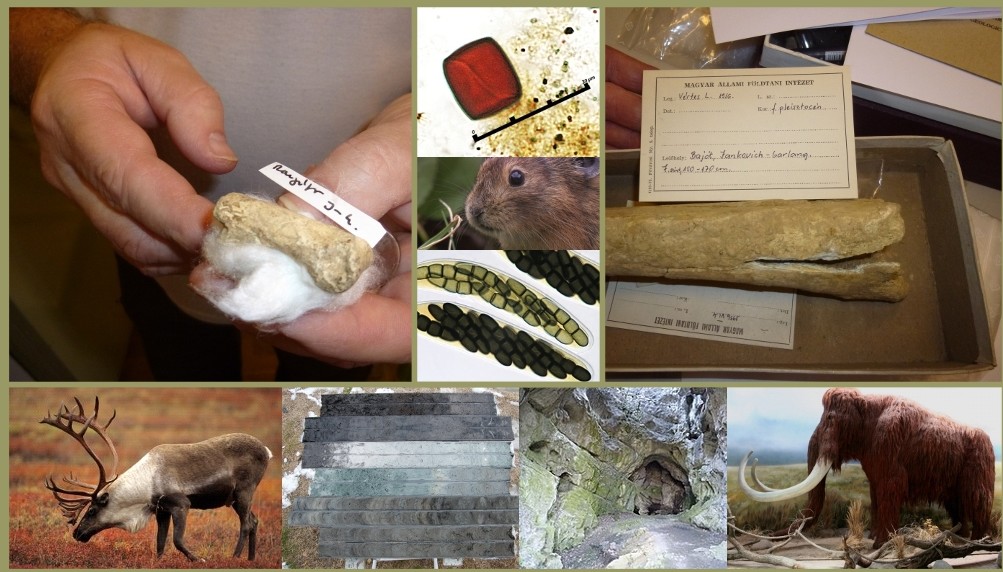Enikő MAGYARI, PhD
Enikő MAGYARI, PhD

professor
Contact
Phone: + 36 1 372-2500/8723
E-Mail: eniko.magyari@ttk.elte.hu
eniko.magyari@bot.nhmus.hu
Office: 1.305, 1.506, Southern Building, Lágymányos Campus
Postal Address: Eötvös Loránd University, 1117 Budapest, Pázmány Péter stny 1/C
Personal/other website: http://sites.google.com/site/enikomagyaripollen/Home
Publications by Enikő Magyari on MTMT
Teaching
Biogeography of the Carpathian Basin (Bsc)
Biogeography (Bsc)
Biogeography and Soil Science (Bsc)
Environmental Archaeology (Bsc)
Nature Protection (Msc)
Climate Change and Carbon Cycle (Msc)
Green Planet – Plant Ecology and Climate Change (Msc)
Environmental Change and Reconstruction (Msc)
Research Methods in Paleoecology (Msc)
Holocene Vegetation Dynamics and Phylogeography (PhD)
Research interest
My main research focuses on the environmental history of the Carpathian-Balkan Region during the last 30,000 years. Using pollen, plant macrofossil, and multi-proxy paleoecological methods I study how rapid climate change events and human impact have shaped the forest and steppe environment, what was the amplitude of climate change during the last glacial termination and what are the region’s climate change characteristics. Our studies also address questions connected to the protection of Hungary’s semi-natural landscapes, we seek baseline conditions in the lowland forest steppe environment prior to major human transformation of the land, study natural forest composition in the mid mountains and focus on Holocene land cover reconstruction, tree and timberline changes in the Carpathians, study the refugial role of the Carpathian Basin for temperate and boreal tree taxa during the Last Glacial Maximu,. We also apply novel ancient DNA techniques to reconstruct past vegetation from soils and lake sediments.
Current projects
Dating MEGAFAUNA Extinction IN THE CARPATHIAN BASIN and examining its relation to paleoenvironmental and Paleoclimate changes 2016-2020 (GINOP-2.3.2-15-2016-00009)
This project aims to date the extinction times of the megafauna members using AMS 14C dating on the large bone collections of Hungarian museums (mainly MTM, MÁFI) (e.g., wholly mammoth, cave bear, horse, reindeer) and examine the relation of these extinction times with ecosystem changes in the Carpathian Basin. In addition we re-examine iconic cave bone assemblages (Rejtek, Jankovich Cave) representing faunal changes during the last glacial termination in order to build radiocarbon chronologies of the major faunal changes. Ecosystem changes are studied using pollen, plant macrofossil, charcoal and coprophilous fungi studies of lake and mire sediments dating to this time period in the Carpathian Basin (Kokad Mire, Lake St Anne, Lake Brazi, Lake Kengyel). d18O, d 13C, d15N and d2Horg measurements are used on lake sediments for paleo-hydrological and paleoclimate reconstructions.
Project participants: Enikő Magyari, Piroska Pazonyi, Ilona Pál, Mihály Gasparik, Mihály Molnár, István Majoros, Attila Németh Attila, Attila Virág, Attila, Valéria Pálházi

Paleolimnological and paleoecological analyses of lakes and mires in the Carpathian Basin based on chironomid and pollen remains 2016-2020 (GINOP–2.3.2–15–2016–00019)
This project contribute to the understanding of how climate change impacts the terrestrial and aquatic ecosystems, how biological proxies from lake and mire sediments can be used for quantitative climate reconstruction, with special focus on the last 2000 years. The project aims to compare climate model based climate reconstructions with proxy based reconstructions, and by pointing out the differences and similarities helps refining climate models that are also used to predict future climate change. Our study sites are in the Carpathian Basin (Lake Balaton, Lake Kolon, Lake Fekete) and in the Pareng-Latorica Mts (Lacul Iezer Latoritei)
Project participants: Enikő Magyari, Mónika Tóth

TRACE: Tracing the Holocene distribution of beech and oak forests in the Carpathian Basin using standscale paleoecology 2018-2022 (NKFIH 129167)
This project focuses on the study of vegetation borderlines in two contrasting environments. In the humid NE Hungarian and West Hungarian hill regions project participants investigate the past distribution limits of beech forests, while in the warm and dry Kiskunság region reconstruct the former cover of oak forests. Paleoecological research methods are completed by community DNA metabarcoding and forestry document analyses. Via the pollen, plant macrofossil and macrocharcoal analyses of small forest hollow deposits the project aim is to gather information on stand scale forest compositional changes in the North Hungarian Mid Mountains and in the Őrség-Vendvidék region of Transdanubia during the last couple of thousand years. Besides introducing stand scale palynology in Hungary, the project also involves the application of novel DNA metabarcoding techniques on forest soils to support our pollen and plant macrofossil based inferences for the former presence of beech in places currently dominated by other trees. In the Kiskunság sand region quantitative forest cover reconstructions are plenned throughout the Holocene using pollen data and the REVEAL model of pollen dispersal and deposition. This research contributes new and important data to better understand the history of the Pannonian oak forest steppes.
Research questions: When did forest cover reach its maximum during the Holocene in the Kiskunság and when did forest cover start to decrease? What were the primary drivers of forest cover decrease?
Project participants: Magyari Enikő, Standovár Tibor, Szalai Zoltán, Rédei Tamás, Biró Marianna, Darabos Gabriella, Pató Zsuzsanna, Buczkó Krisztina, Molnár Mihály, Kohán Balázs, Szmorad Ferenc, Ujházy Noémi, Pál Ilona, Varga György

(Location of forest hollows, landslide basins and soil DNA sampling points in the Mátra Hills)

